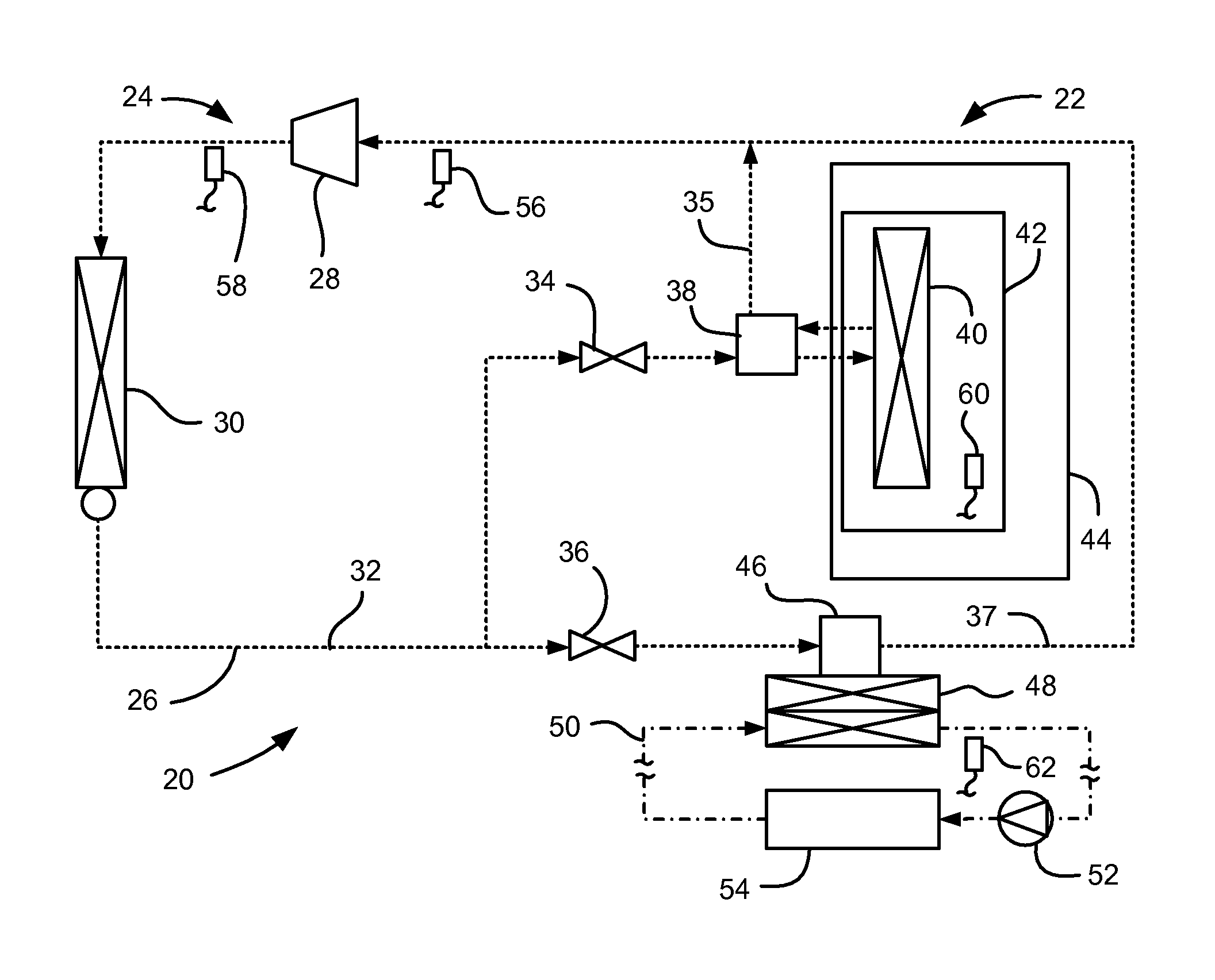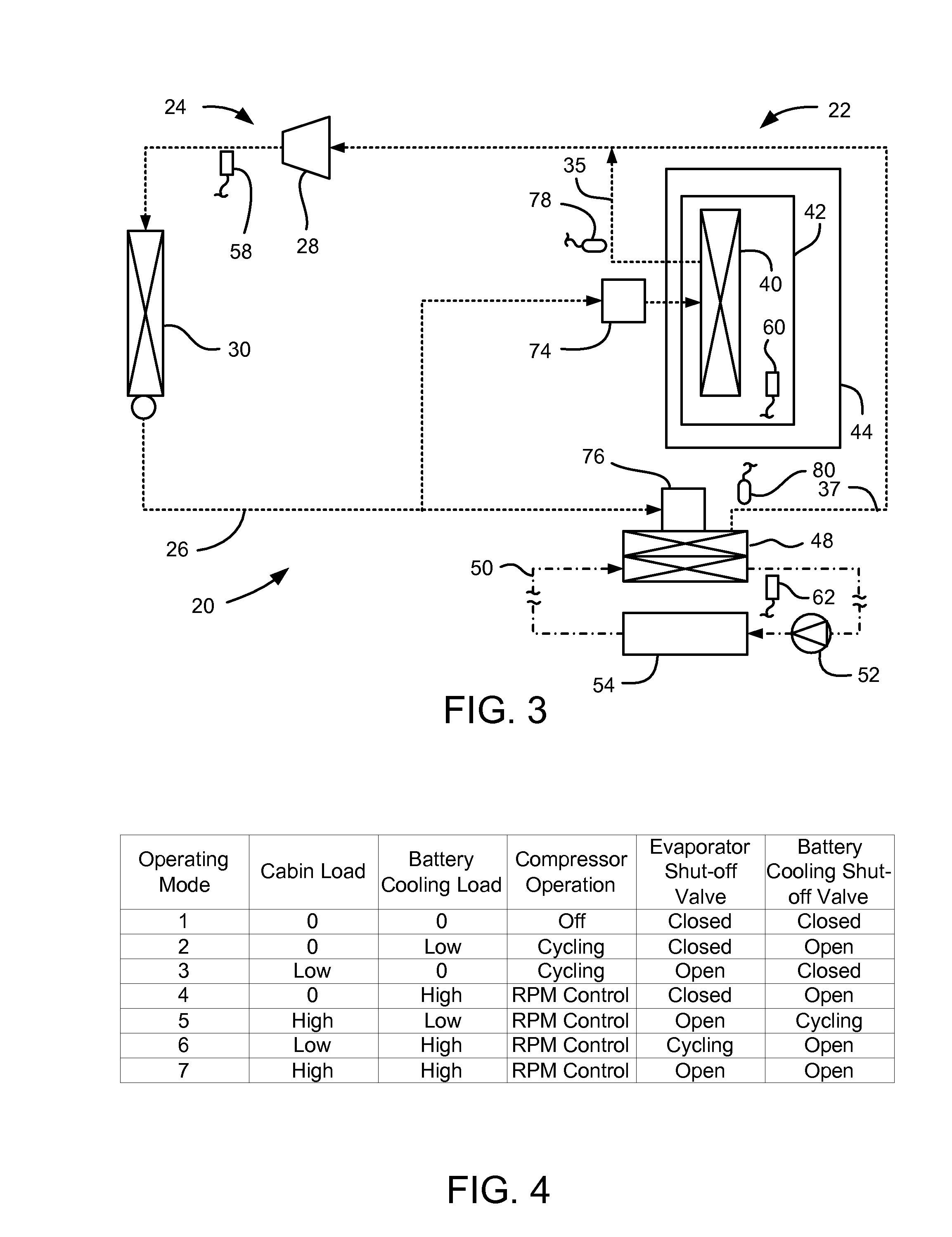Vehicle HVAC and Battery Thermal Management
- Summary
- Abstract
- Description
- Claims
- Application Information
AI Technical Summary
Benefits of technology
Problems solved by technology
Method used
Image
Examples
Embodiment Construction
[0012]Referring to FIG. 1, a portion of a vehicle, indicated generally at 20, includes a vehicle HVAC system 22. The HVAC system 22 includes an air conditioning portion 24 having a refrigerant loop 26. The refrigerant loop 26 includes a refrigerant compressor 28 in fluid communication with a condenser 30. The refrigerant compressor 28 may be electrically driven, with an ability to adjust the speed (RPMs) of the compressor during operation. The condenser 30, in turn, directs refrigerant into a refrigerant line 32 that forks into two legs 35, 37 of the refrigerant loop26 to direct refrigerant into both an evaporator shut-off valve 34 and a battery cooling shut-off valve 36. The evaporator shut-off valve 34 selectively allows for and restricts the flow of refrigerant through it into an evaporator thermal expansion valve 38. The evaporator thermal expansion valve 38, in turn, is in fluid communication with an evaporator 40, which is located in a heating, ventilation and air conditioning...
PUM
 Login to View More
Login to View More Abstract
Description
Claims
Application Information
 Login to View More
Login to View More - R&D
- Intellectual Property
- Life Sciences
- Materials
- Tech Scout
- Unparalleled Data Quality
- Higher Quality Content
- 60% Fewer Hallucinations
Browse by: Latest US Patents, China's latest patents, Technical Efficacy Thesaurus, Application Domain, Technology Topic, Popular Technical Reports.
© 2025 PatSnap. All rights reserved.Legal|Privacy policy|Modern Slavery Act Transparency Statement|Sitemap|About US| Contact US: help@patsnap.com



